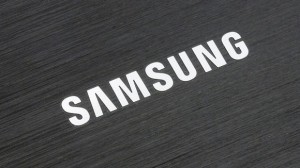
Samsung’s revenue and profits have been steadily declining in recent months, and it has given the company inspiration to reshuffle its priorities and put a higher focus on adopting new trends (like the trend of using metal on a device to make it feel more premium.) As SamMobile exclusively revealed yesterday, Samsung is developing the Galaxy S6 – codenamed Project Zero – from scratch in a bid to make it the best Galaxy S flagship we’ve seen yet, and soon after we released details on Project Zero, we were given more information on the S6 by our insiders, including info on its preliminary specifications. We never like making our readers wait, so let’s take a look at what we know about Samsung’s sixth-generation Galaxy S flagship.
Starting with the display, the Galaxy S6 will unsurprisingly feature a display with a Quad HD (2560×1440) display, though we weren’t told what screen size Samsung is aiming for (it probably isn’t decided yet, given how early it is in the device’s development.) The camera sensor on the S6 is the IMX240, the same one found on the Galaxy Note 4. However, our insider says Samsung is still deciding between a 16-megapixel and 20-megapixel camera, though it’s likely Samsung will stick to a 16MP camera with optical image stabilization, but hopefully with even better low-light photography than the Galaxy Note 4.
The front camera will be upgraded to a 5-megapixel unit, an unsurprising fact considering even mid-range devices like the Galaxy Grand Prime and Galaxy A3 have a 5MP camera. In terms of storage, we’re told the S6 will come in 32, 64 and 128GB variants. The lack of a 16GB model will be a welcome move in our opinion, since flagship devices in this day and age should simply not be that limited when it comes to internal storage, especially for those who like to install a lot of apps and high-end games.
Now, moving on to the processor that will power the Galaxy S6. According to information we’ve received, Samsung will be going with the brand new Exynos 7420, which will be a fully 64-bit chip with four Cortex-A53 and four Cortex-A57 cores. The Exynos 5433 is also a 64-bit chip, but Samsung hasn’t enabled 64-bit support on the Galaxy Note 4, likely because the Snapdragon 805 used in most models of the Note 4 is a 32-bit processor, and also because Android doesn’t support 64-bit support until Android 5.0 Lollipop.
An interesting thing we’ve learned is that Samsung has developed an in-house LTE modem (model SS333, or Exynos Modem 333), which might replace the Intel modem Samsung is using on the Exynos 5430/5433 for offering LTE connectivity. A switch to its own modem will be a major step forward for the Korean manufacturer, and could help it move away from Qualcomm’s Snapdragon chips, which currently power a majority of the models of its flagship devices.
However, the Galaxy S6 will still have a Snapdragon variant. As expected, Samsung will be using the Snapdragon 810, the first high-end 64-bit chip in Qualcomm’s Snapdragon lineup that is likely to power flagship products from other manufacturers next year. As for RAM, we’re guessing Samsung will stick to 3 gigs of memory, which should be more than enough to handle every task, especially since the S6 won’t come with the stylus and phablet-related features that need extra memory on the Galaxy Note devices.
While it’s not that interesting a detail, we were also told that the Galaxy S6 will use Broadcom’s new BCM4773 chip, which combines navigation (GPS) and other sensors and puts them on a single chip, an industry first. Basically, the BCM4773 allows the device to take and compute data from the Wi-Fi, Bluetooth, and GPS modules on a single chip, resulting in reduced battery drain compared to what is available on smartphones and tablets today.
While we are pretty confident about everything we’ve learned from our insiders, we will have to add the usual disclaimer that things could change in the coming months, especially since the Galaxy S6 is in an early stage of development. In the end, we just hope Project Zero will bring a major change in what we’ve come to expect from Samsung smartphones, and we’ll be trying our best to obtain any more information that creates a better picture of what the company is up to with its next big thing.
We’ll end this article with a list of model numbers for the S6 in various regions.
- • Zero-F US – VERIZON SM-G920V_NA_VZW
- • Zero US – AT&T SM-G925A_NA_ATT
- • Zero EUR – OPEN SM-G925F_EUR_XX
- • Zero-F CA (Canada) – BELL MOBILITY SM-G920W8_NA_BMC
- • Zero-F US – SPRINT PCS SM-G920P_NA_SPR
- • Zero CA – BELL MOBILITY SM-G925W8_NA_BMC
- • Zero US – VERIZON SM-G925V_NA_VZW
- • Zero-F – EUR OPEN SM-G920F_EUR_XX
- • Zero US – T-MOBILE (US) SM-G925T_NA_TMB
- • Zero US – SPRINT PCS SM-G925P_NA_SPR
- • Zero US – US CELLULAR SM-G925R4_NA_USC
- • Zero-F US – AT&T SM-G920A_NA_ATT
- • Zero-F US – US CELLULAR SM-G920R4_NA_USC
- • Zero-F US – T-MOBILE (US) SM-G920T_NA_TMB